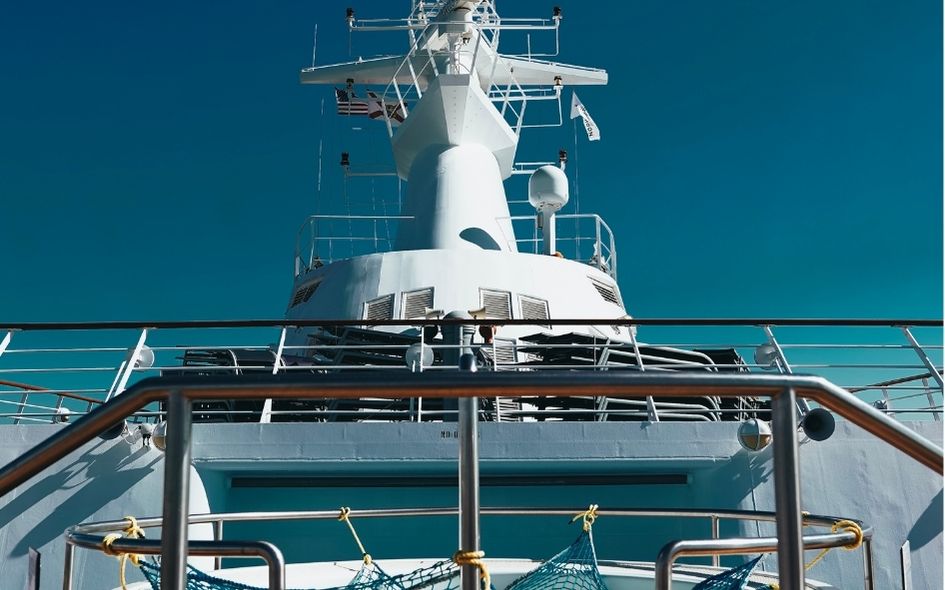Yachts are made in shipyards. The word “shipyard” comes from “astilla,” which is a small piece that breaks off from wood. Wood was the material used for all vessels before the use of metal for that purpose.
The word “atarazana” comes from the Arabic word “ad-dar as-sina’a,” which means “the house of industry” or “the house of manufacture.” With this term, the Arabs referred to both shipyards and any other manufacturing center, such as a weapons factory (in fact, the word “arsenal” comes from the same root, as does “dockyard”). In its nautical sense, the term also referred to centers where, even if ships were not built, their parts or accessories were stored or manufactured. Today, “atarazana” is synonymous with “shipyard.”
¿Dónde se hacen los yates?
Shipyard Facilities at MetalShips & Docks in Vigo (Spain).
All nations with significant maritime trade have made efforts to establish shipyards for the construction of merchant and warships.
During the Middle Ages, shipyards in Venice, Genoa, and Pisa were particularly notable. In 1252, the Atarazanas de Sevilla, one of the largest industrial facilities of the Late Middle Ages in Europe, was established, with an area comparable to that of the Arsenal of Venice. Shipbuilding was also significant in the Kingdom of Aragon, with shipyards in Arenys, Blanes, Barcelona, Mataró, Villanueva y Geltrú, Sitges, and Tortosa.
Shipbuilding has also taken place in cities with navigable rivers. For instance, in the UK, King Henry VIII of England founded shipyards in Woolwich and Deptford in 1512 and 1513, respectively, on the banks of the Thames. In Spain, shipyards like those in Sevilla were established on the Guadalquivir River.
Despite the decline of maritime activities in eastern Spain due to expeditions to America and military campaigns in Flanders, shipbuilding continued throughout the 17th century, experiencing a revival during the reign of Charles III, notably in Masnou.
The Guayaquil Shipyard in Ecuador, founded in 1547, became the largest in South America.
Description
In addition to the slipways where hull construction takes place, a shipyard includes various other facilities such as the technical office, workshops, commercial offices, and administrative offices. The technical office is where the vessel is designed, providing necessary construction data and performing calculations related to displacement, tonnage, propulsion power, stability, etc.
Workshops are where mechanics handle tasks like welding, cutting, and polishing plates, as well as constructing mechanical, hydraulic, and electrical machinery and equipment, including wiring and piping. Commercial and administrative offices handle material procurement, payments, insurance, etc.
For certain components like propulsion machinery or weapons (for warships), shipyards may subcontract to other companies.
The “lofting room” is where full-scale templates of parts are drawn on the floor, based on the shape of plates, profiles, frames, and other components. These templates are then used in workshops to fabricate the parts. Shipyards use large, self-propelled, tower, or bridge cranes to move and position these parts.
Shipyards Today
Since the 1980s, European shipyards have lost ground to those in Japan and South Korea. As of 2015, the busiest shipyards are located in China, South Korea, and Japan.
In 2012, the top ten shipyards in the world by ship production, based on tonnage, were:
Top Shipbuilding Yards (2012)
Name Location GT Ships
Shanghai Waigaoqiao Shanghai, China 15,096,900 164
Imabari Shipbuilding Marugame, Japan 15,692,687 393
Hyundai Mipo Dockyard Ulsan, South Korea 16,715,650 618
Oshima Shipbuilding Oshima, Japan 16,983,004 539
Tsuneishi Shipbuilding Numakuma, Japan 17,824,038 492
Mitsubishi Heavy Industries Nagasaki, Japan 19,506,548 315
Hyundai Samho Heavy Industries Samho, South Korea 28,414,515 372
Samsung Heavy Industries Geoje, South Korea 58,082,349 785
Daewoo Shipbuilding & Marine Engineering Okpo, South Korea 68,284,087 834
Hyundai Heavy Industries Ulsan, South Korea 93,893,700 1428
In Europe, Spain, Italy, the UK, France, Germany, Belgium, Portugal, Norway, the Netherlands, and, to a lesser extent, Greece, have significant shipbuilding industries. Turkey, near the European Union, also has a competitive shipbuilding industry.
In North America, Gulf Shipyard stands out as Mexico’s oldest shipyard, established in 1935 in the Port of Veracruz. It not only constructs and repairs vessels but also diversifies into manufacturing metal-mechanical structures. The United States has also been a major shipbuilder.
In South America:
- Peru operates the state-owned company SIMA, constructing vessels for both military and commercial use.
- Chile has ASMAR, a state-owned company with facilities in Valparaíso, Talcahuano, and Punta Arenas.
- Colombia’s Cotecmar develops projects for building ships for the national navy and repairs vessels.
- Argentina has several shipyards, including Astillero Río Santiago and Tandanor.
¿Dónde se hacen los yates?
¿Where to rent fishing yachts in Los Cabos?
Remember that you can count on us, Cabo VIP, to assist you in your search and rental of a yacht for your participation in sports fishing tournaments and leisure. We will answer all your questions, get in touch with us or write to our WhatsApp: (+52) 624 218 2300.
¿Do you need yacht rentals in Los Cabos? ¿Yacht rentals in La Paz, Cabo San Lucas, San José del Cabo, Loreto, Todos Santos, El Centenario, El Pescadero, Chametla, Melitón Albáñez Domínguez, La Ribera, Los Barriles, El Sargento, Miraflores, General Juan Domínguez Cota, in Baja California Sur, México? ¡Reserva tu Book your yacht now with Cabo VIP! ¡Discover new destinations and live extraordinary experiences!
¿Dónde se hacen los yates?

